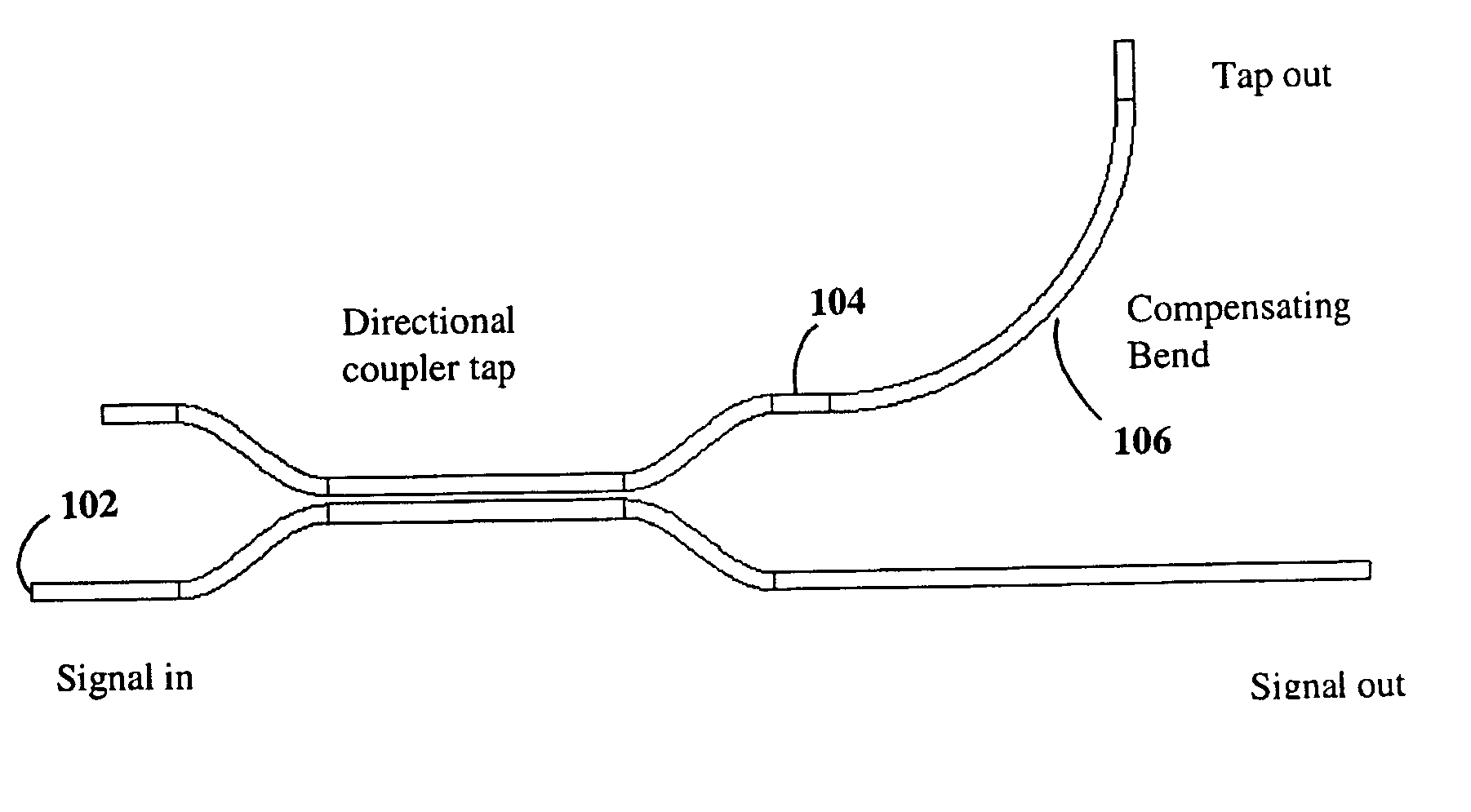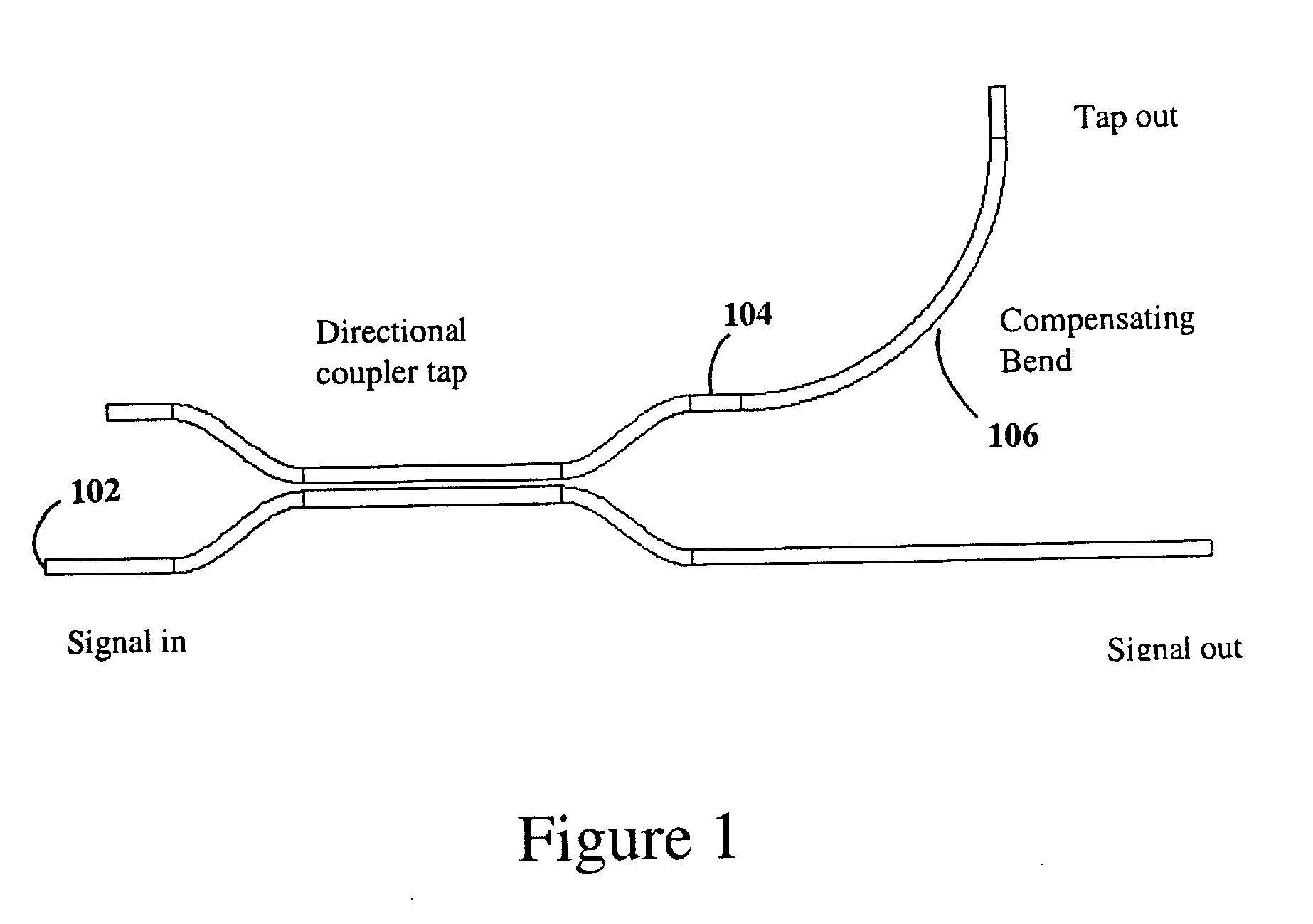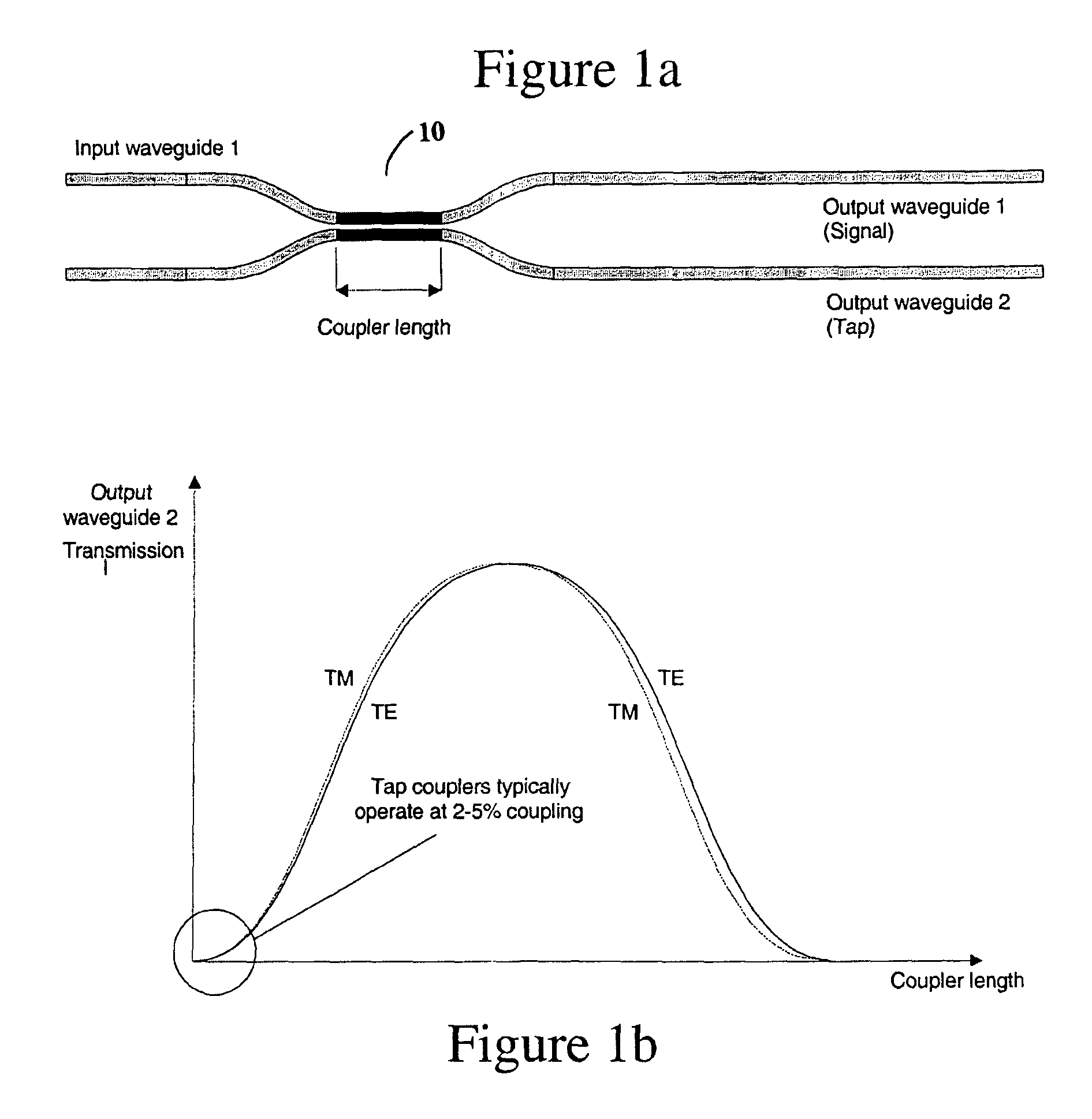Polarization compensated optical tap
a polarization-compensated, optical tap technology, applied in the direction of optical waveguide light guide, instruments, optics, etc., can solve the problems of small thermal stress generation in materials, low tap pdl, and small stress induced birefringence, so as to achieve greater efficiency and effectively null the effect of polarization dependen
- Summary
- Abstract
- Description
- Claims
- Application Information
AI Technical Summary
Benefits of technology
Problems solved by technology
Method used
Image
Examples
Embodiment Construction
[0036] Referring now to FIG. 1, a waveguide circuit a circuit is shown which conveniently and inexpensively compensates for the polarization dependence of a tap for a silica-on-silicon waveguide device. An input port 102 is optically couple by way of a directional coupler 100 to an output branch arm 104. The low PDL tap function is achieved through the use of a small radii bend 106 on the tapped or branch arm. A same phenomenon that causes the TM polarization to more readily couple between waveguides in a directional coupler also causes a higher polarization dependent bend loss for small radii bends.
[0037] In essence, the TM mode is less well confined so that it both couples between waveguides more easily and radiates from bends more readily than TE modes.
[0038] Because TM modes couple more strongly to the tap or branch waveguide from a trunk waveguide the tapped power level within the branch is slightly higher for the TM polarization than TE. This is illustrated in FIG. 3c at the...
PUM
 Login to View More
Login to View More Abstract
Description
Claims
Application Information
 Login to View More
Login to View More - R&D
- Intellectual Property
- Life Sciences
- Materials
- Tech Scout
- Unparalleled Data Quality
- Higher Quality Content
- 60% Fewer Hallucinations
Browse by: Latest US Patents, China's latest patents, Technical Efficacy Thesaurus, Application Domain, Technology Topic, Popular Technical Reports.
© 2025 PatSnap. All rights reserved.Legal|Privacy policy|Modern Slavery Act Transparency Statement|Sitemap|About US| Contact US: help@patsnap.com



